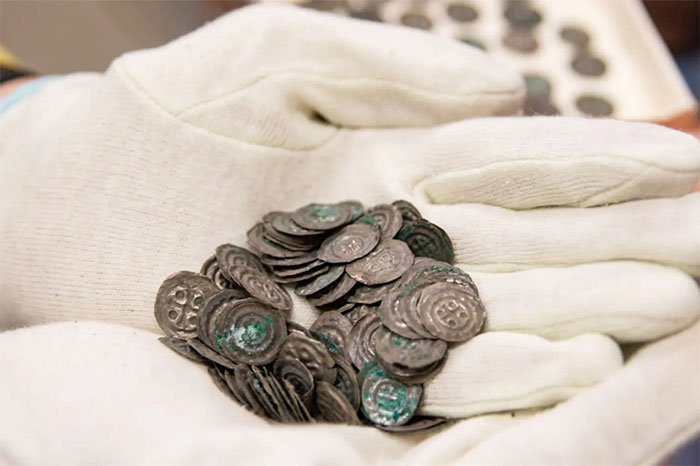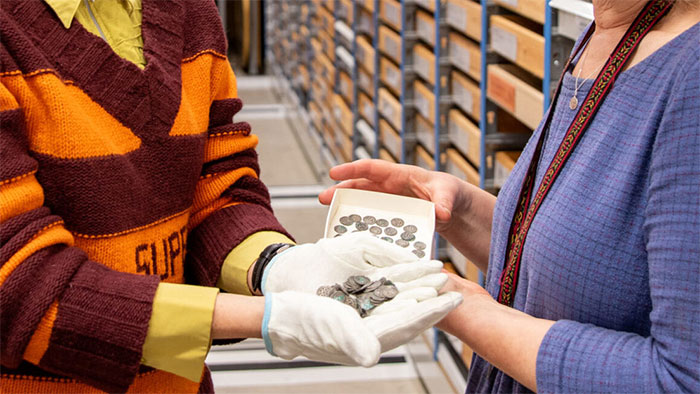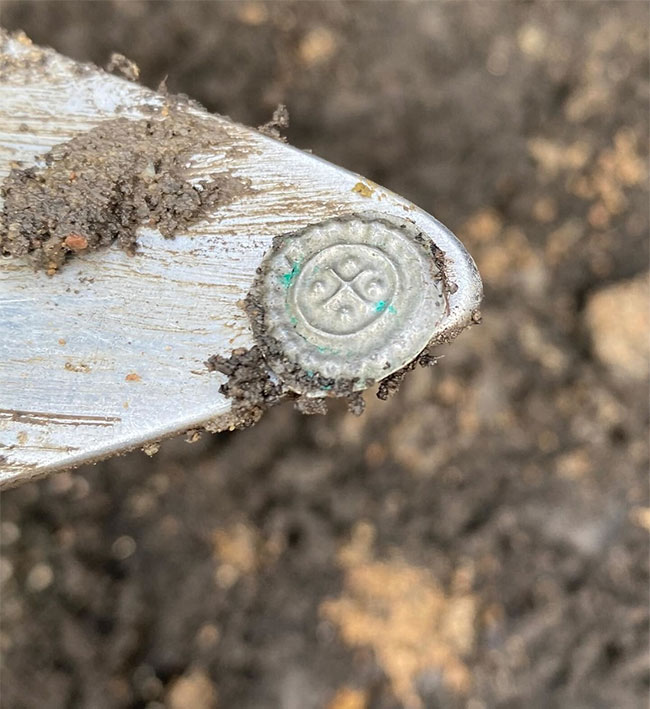Archaeologists recently discovered a 12th-century tomb during an archaeological dig and found buried treasure with it.
The Jönköping County Museum announced the discovery in a March 27 press release. The discovery occurred during the excavation of a tomb in an ancient church in Visingsö, a Swedish island.
The coins were found in the grave of a man who experts believe was between 20 and 25 years old when he died. The coins were produced between 1150 and 1180.
 Swedish archaeologists found a 900-year-old coin.
Swedish archaeologists found a 900-year-old coin.
Project director Anna Ödéen explained in a statement: “My colleague Kristina Jansson and I found two skeletons in the vault where the wire was located. We cleaned up the bones from the buried people to know What do the graves look like?
Suddenly three silver coins appeared! We quickly realized that there were many more people lying near the left leg of the buried person.”
A total of 170 silver coins were found. Bractate is a thin, coin-shaped piece of metal used in jewelry. While to some the find may be just old metal, Swedish historians say the discovery has important implications for their field.

 A Swedish coin expert told the museum that the find was “absolutely shocking”.
A Swedish coin expert told the museum that the find was “absolutely shocking”.
“This discovery is exceptional, partly because there were very few similar finds from the time period, partly because some of the coins were completely unknown before, ” the museum said.
What puzzled archaeologists was that the coins were found in a Christian tomb. Burial with a pile of coins was not a common practice among Christians in the Middle Ages.
The press release explains: ” It is rare that discoveries are made in Christian tombs , that custom belongs to prehistoric times and that makes the search for Visingsö special. Why this man in his 20s took all these coins to his grave is unknown.
County museum archaeologists hope to uncover more clues as they continue to study the discovery further.
 The coins were found in the grave of a man who experts believe was between 20 and 25 years old when he died.
The coins were found in the grave of a man who experts believe was between 20 and 25 years old when he died.
A Swedish coin expert told the museum that the find was “absolutely shocking”.
Eeva Jonsson of the Imperial Coin Cabinet said in a statement: “This is an absolutely sensational find that will change the history of medieval coinage in Götaland and shed light on a period that has been largely unknown. known” .





